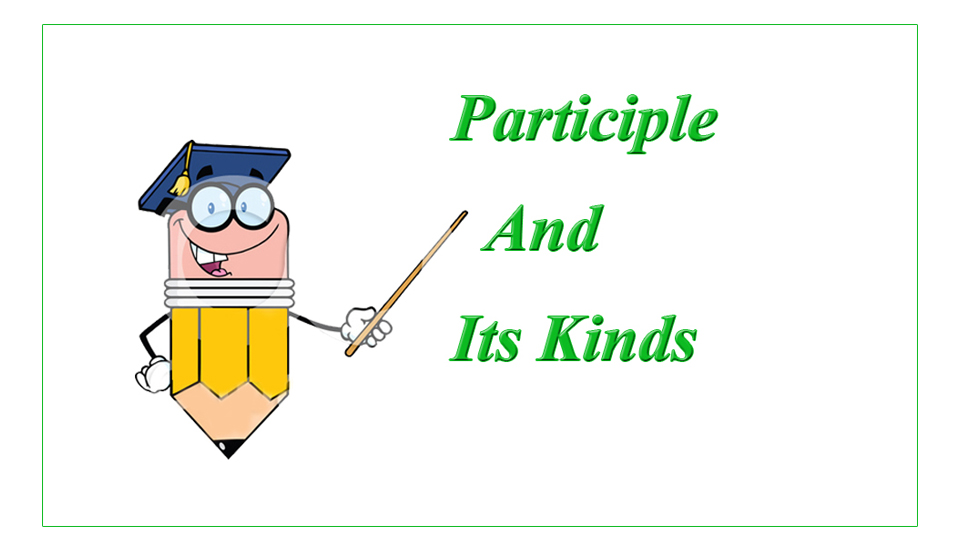
Participles are the major part of a sentence, without which a sentence cannot make a sense. In this lesson you will learn about participle and its kinds.
Participle And Its Kinds
What is a participle? When verb works both as a verb, as an adjective and adverb is called participle/ verbal adjective.
Kinds of Participle
There are three kinds of participle.
- Present Participle: When first form of the verb with “ing” works as a verb, as an adjective or as an adverb is called present participle.
How to use?
As a main verb:The present participle is used as a main verb with “ing” form in continuous tenses with “be” forms.
- She was offering pray.
- They are helping him.
- They were coming to academy.
- He will be studying a book.
As an adjective: The present participle can be used as an adjective to modify the nouns or pronouns. Also called participle phrase.
- They will hear shocking news.
- They bought some fishing boats.
- He saved the life of dying patient.
- A winning participant is stronger than a losing participant.
As an adverb:Here the participle works as an adverb, it modifies the action of the subject.
- She was coming smiling.
- He is coming running.
- He was eating food laughing.
- They were going weeping.
2. The Past Participle: The third form of the verb is called past participle, it works both as a verb and as an adjective.
How to use?
As a main verb: The past participle is used as a verb in all the active perfect tenses to tell us the completion of an action. It is also used in all the tenses of passive voice. They have various endings, usually -ed, -d, -t, -en, or -n. Look at these examples:
- She tells she must have worked hard.
- She believes that she has finished it.
- They have cooked the food.
As an adjective: The past participle is used as an adjective to tell us the state/ condition of a noun.
- These are polished shoes.
- They brought a used car.
- He is retired manager.
- This is a broken chair.
3. The Perfect Participle: The perfect participle shows that someone completed an action and started another action in the past.
Formula: Having + 3rd form of the verb + obj. + simple past tense.
- Having seen the principal, they became quiet.
- Having done the work, we went outside.
- Having failed in the first attempt, he made no further attempts.
- Having played the match, they immediately left the ground.
Note: We can use past continuous tense also in second clause.
- Having seen the police, they were running a way.
- Having been criminal, they were excusing.

2 comments
thank you.
Thank you dear, hope it was helpful.